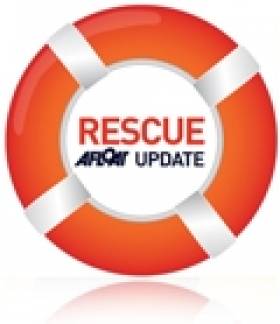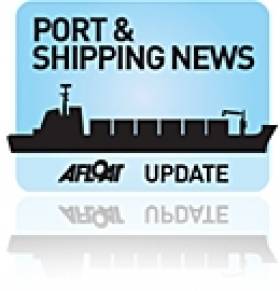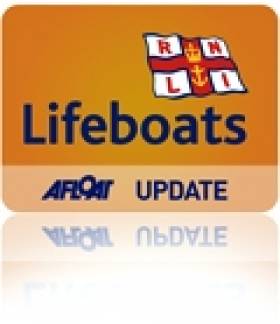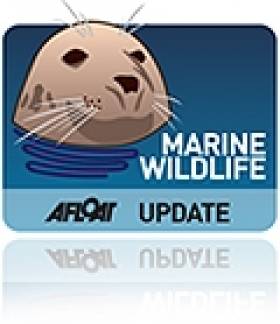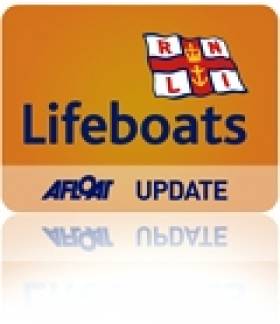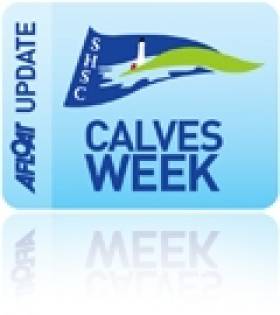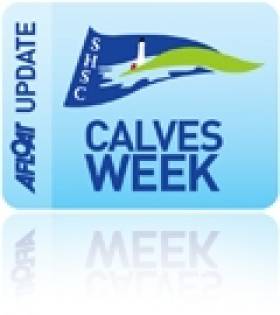Displaying items by tag: west cork
Diver Dies After Saltee Islands Incident
#RESCUE - RTÉ News reports that a man has died following a diving accident off the Saltee Islands at the weekend.
The 25-year-old is believed to have rapidly ascended from 25 metres below the surface while on a dive with three others on the morning of Saturday 22 September.
Irish Coast Guard operatives from Waterford and Kilmore Quay were involved in the operation to rescue the man, who was later pronounced dead at Waterford Regional Hospital.
Meanwhile, RTÉ News also reports on the rescue of a man from a burning motor cruiser off the Seven Heads Peninsula in West Cork on Saturday afternoon.
Crew aboard the Naval Service vessel LE Niamh, on patrol in the area, transferred the man from his vessel to Kinsale. The boat later sank after attempts to extinguish the fire.
Hazardous Cargo Containers Drifing Towards Ireland
PORT & SHIPPING NEWS - A number of hazardous containers believed to have fallen from a cargo ship this summer are drifting towards Ireland's southwest coast, the Irish Examiner reports.
The containers are said to have slipped from the deck of the MSC Flaminia, a German-registered cargo vessel which caught fire on 14 July in the middle of the Atlantic Ocean, with the loss of two crew and forcing the rest to abandon ship.
The vessel had been en route from North Carolina in the United States to Brememhaven in northern Germany when the incident occurred.
Among the thousands of containers it was carrying were 149 classed as 'dangerous goods', their exact nature not yet confirmed, and it is thought some of these are among the containers that fell into the sea and went missing as the ship listed in mid-ocean.
As reported by the Maritime Bulletin, there was some speculation as to whether the missing containers slipped off deck or were jettisoned.
The containers have since appeared in the main cargo shipping lanes off the southwest coast, posing a danger to transatlantic vessels.
Operations have already begun to retrieve the containers and tow them into Castletownbere in West Cork.
The Irish Examiner has more on the story HERE.
Surface Search for Missing Diver Winds Down
#MISSING DIVER - Teams were still searching yesterday at a wreck site off Cape Clear for a diver missing since Tuesday, according to The Irish Times.
A Defence Forces spokesperson told the paper that a sonar device would be employed to scan the seabed for any sign of 54-year-old Reinhardt Teschke, who failed to resurface from a 90m dive on the wreck of British merchant vessel the Minnehaha.
As previously reported on Afloat.ie, Baltimore RNLI launched both its inshore and all-weather lifeboats to the scene south of Balitmore Harbour in West Cork on Tuesday evening to search for the German diver, one of a party of three at the wreck site.
Irish Coast Guard helicopter Rescue 115 and the Naval Service vessel LE Ciara were also involved in the surface search, which was set to be wound down yesterday.
Search Resumes for Missing Wreck Diver off Baltimore
#rnli – Baltimore Lifeboat have resumed a search for a missing diver this morning at a wreck site south of Baltimore Harbour in West Cork.
Both the inshore lifeboat and all weather lifeboat were launched yesterday evening in response to a request from the coastguard to assist in locating a diver reported missing earlier in the afternoon.
The diver had been one of a party of three diving at a wreck site 12 miles south of Baltimore Harbour. The divers are reported by the RNLI to be of German and the dive site the wreck of the Minnehaha.
Weather conditions were excellent with a 1.5 metre swell and force 3-4 winds. The Navy vessel LE Ciara, Coastguard Helicopter 115 and the Holly Joe were all involved in the search.
As darkness approached last night the inshore lifeboat (ILB) was stood down and returned to Baltimore at 21.10 approx. Onboard the B-class ILB Bessie, were Helm Youen Jacob, Shane MacSweeney and Ger O'Brien. On board the Tamar class ALB Alan Massey, were Coxswain Kieran Cotter, Cathal Cottrell (mechanic), John Rochford, Brian MacSweeney, Jerry Smith and Aidan Bushe.
Samples Taken from Baltimore Fin Whale Carcass
#MARINE WILDLIFE - The Irish Examiner reports that samples from the fin whale that stranded and died in Baltimore Harbour last week have been sent to Dublin for analysis.
Samples of skin and blubber will be tested by marine science experts at the Irish Cetacean Tissue Bank in the Natural History Museum as well as at the Marine Institute, while a student studying for a PhD on the feeding ecology of fin whales will also examine the remains.
As reported yesterday on Afloat.ie, the whale carcass has been towed out of the inner harbour as preparations are made to sink it to the seabed, where marine life such as fish and crabs will quickly strip it down to a skeleton that locals hope to put on display in the West Cork town.
A post-mortem will not be carried out by the Irish Whale and Dolphin Group (IWDG) due to lack of funding for the specialised procedure. A previous necropsy of a fin whale stranded at Courtmacsherry was funded by the US-based magazine National Geographic.
Double Tragedy for Beara Peninsula as Retired Teacher Drowns
#NEWS UPDATE - The Irish Times reports that the body of a retired schoolteacher was recovered from the sea off Castletownbere in West Cork on Friday in the second tragedy the area has seen this week.
Sixty-six-year-old Pearse Lyne drowned after his fishing boat capsized in poor weather off the Beara Peninsula.
A search operation was launched around 1.30pm after a cliffwalker spotted the upturned vessel near the Dzogchen Buddhist retreat, and the body of the father of four and former national school principal was discovered some 90 minutes later in the water near Pulleen harbour.
The sad incident occurred just says after farmer and poet John O'Leary drowned off Cod's Head when the Enterprise sailing dinghy he was sailing with his teenage son Christopher capsized.
As previously reported on Afloat.ie, Minister for the Marine Simon Coveney paid tribute to O'Leary as well as Quilty fishermen Michael Galvin and Noel Dickinson, who drowned earlier this week off the Clare coast.
Meanwhile, in Dongeal a diver was rescued after getting into difficulty in Lough Salt on Thursday evening, according to the Donegal Democrat.
The Donegal native was one of two divers in the lough at the time, and is believed to have experienced buoyancy issues while some 50m below the surface.
He was taken to Letterkenny General Hospital and later transferred to Craigavon for treatment for decompression sickness. The man is now recovering.
His diving partner, an Italian national living in Ireland, made it to shore unharmed.
'Nothing Can Be Done' for Stranded Whale in Baltimore Harbour
#BALTIMORE WHALE - Hopes are fading for an injured whale trapped in Baltimore Harbour, according to the Irish Independent.
It's being reported that the fin whale, which was injured on sharp rocks and beached off the pier in the West Cork harbour yesterday, is being left to die as it is too ill to be helped back to deeper water and too large to be euthanised.
It had been hoped that the whale would return to the sea under its own power by high tide but that sadly did not happen.
"Nothing can be done," Dr Simon Berrow of the Irish Whale and Dolphin Group (IWDG) told the Independent. "It can't be refloated or drigged. All you can do is let nature take its course."
The 40-foot whale became something of an instant attraction in Baltimore as crowds gathered in the harbour, as TheJournal.ie reports.
However, marine wildlife experts believe that the young whale must have been sick or malnourished to have made it so far from the open sea into the sheltered harbour.
The IWDG's Padraig Whooley also reiterated that most whale strandings end in death, and Brendan Cottrell of the Baltimore RNLI said the best thing was to do their best not to stress the animal further.
Elsewhere, a female fin whale stranded on a beach in Cornwall has died despite efforts to save her, according to the Daily Mail.
The 65-foot whale was put down by vets from British Divers Marine Life Rescue after she was found beached at Carylon Bay on the south coast on Monday morning. The whale was was described as "incredibly undernourised".
Body Recovered After Sailing Dinghy Overturns Off West Cork
#MISSING BOATS - The Irish Times reports that the body of a man in his 60s has been recovered from the sea off West Cork in the early hours of this morning.
The body, believed to be that of John O'Leary from Allihies, was found as part of a major search operation after the sailing dinghy carrying the man and his 18-year-old son Christopher overturned off the Beara Peninsula yesterday evening.
According to RTÉ News, the two spent four hours clinging to the boat before swimming towards the shore. Christopher reached land almost 1km away to raise the alarm but his father went missing in the interim.
The boat was discovered around 8pm with no sign of John O'Leary in the vicinity, according to the Irish Independent.
The Irish Coast Guard at Valentia co-ordinated the search operation from 9pm last night, and volunteers with the Castletownbere RNLI lifeboat recovered a body off Cod's Head around 1.30am. A postmortem will be carried out later today at Cork University Hospital.
Meanwhile, the search continues for a missing fishing boat off Co Clare.
The Lady Eileen, with two crew on board, was due to return to Quilty yesterday evening.
Coastguard search teams discovered debris and diesel in the water near Spanish Point before the search was postponed due to low light.
Garda divers have been asked to assist in the search and are due in the area around midday.
West Cork Calves Week 2012 Keeps the Best 'til Last! (Photos Here)
Cork Dry Gin Calves Week at Schull, West Cork, certainly kept the best til the last writes Claire Bateman. Scroll down for Photos.
Given the fog and poor visibility experienced during the early part of the regatta week, the organisers made the wise decision to switch the Fastnet race to Friday and what a day it turned out to be. There was a beautiful warm easterly breeze force 4/5 with non stop sunshine. Race Officer Neil Prendeville reversed the order of the start so that the lower handicapped boats started first and off went all the classes of the sixty boat fleet to enjoy a day the like of which has not been experienced for a long, long time and certainly not this year. The wind, which was coming from the east, meant that instead of a start directly into the wind what they had was a reaching start and by the time it came to the Class Two and Three start they charged the line some believing that the buoy safeguarding the stern of the committee boat was an inner distance mark.
Both the Corby 25 Allure and the quarter tonner Per Elisa returned to start again before proceeding on a course that took them up Long Island Sound under spinnaker, seven and eight abreast, and what a sight that was, before taking Goat Island to port and then a fetch to the Fastnet which course was also followed by the Class One boats. Being a Fastnet race with the magnet of rounding the famous rock, the boats as usual were packed with not only racing crews but there were also a lot of families on board from Grannies and Grandads to babies and even some canines, all having the time of their lives in the brilliant sun and white capped seas.
In a race like this taking in the Fastnet with the tidal sweep around it throwing up a lumpy sea it was inevitable there would be one or two incidents and one of these saw the Travers/Rohan quarter tonner Per Elisa doing a pirouette much to the astonishment of her helm and crew only to find their rudder had loosened and one of the other boats came to her assistance. There were one or two other coming togethers in the tight racing and Pat Barret/Cathal Conlon in Y knot came in to the finish on a tight spinnaker reach and experienced great difficulty in dropping their big red kite trying everything from going backwards and forwards and even sending a crew member up the mast to try to free it which they eventually succeeded in doing.
In the midst of all this enjoying the glorious weather and sailing spectacle of the sixty boat fleet the cruise ship Hebridean Princess was arriving in Schull Harbour and the gentlemanly Master called the Race Officer to ascertain the situation and having it explained to him the race would last approximately anther hour, brought his ship around Long Island through the Gascanane Sound to anchor at the mouth of the harbour thus enabling his passengers to have the unexpected treat of viewing the racing in the unbeatable scenic surroundings.
In Class One IRC Kieran Twomey's "Gloves Off" returned to her winning form with a tight twenty second victory over Martin Breen's "Lynx Clipper.This result confirmed " Gloves" as IRC One overall boat of the week.
In Class One ECHO it was another popular win for Gabby Hogan's "Growler" that also saw him take the overall trophy.
In Class Two IRC Jason Losty finished a fantastic week in runaway style with a comprehensive victory to take both the day prize and overall trophy, when his closest competitor the Travers/Rohan "Per Elisa" had to retire due to the already mentioned gear failure.
In Class Three IRC Derek Dillon posted another perfect score to comfortably win the overall from Dan O' Donovan's "Second Count",while in ECHO victory went to local Schull boat Paul Murray's "Full Pelt".
In Class Four it was a clean sweep in both divisions for the Murphy family in "Shelly D" while the overalls went to Richard Hanley's "Saoirse"in IRC and the Molloy/O' Shea duo on "No fixed Abode", who despite a disqualification in the final race, won the ECHO trophy.
In White Sail One Michael O Leary's "Act Two" revelled in the fresh conditions to win in both divisions and also took the ECHO overall while William Lacy and Charles Blandford in "Sojourn" collected the IRC trophy.
In White Sail Two Michael Hearn in "Summerfly" had a brilliant trip around the rock to win from Brian Ronan's "Kopper Too" with the overall going to Peter Morehead of the sponsor company, Cork Dry Gin, in "Giggles".
All in all a perfect ending to Cork Dry Gin Calves week 2012.
Gloves off Continues Winning Ways at Light Air Calves Week
#calvesweek –The new compact format for Calves week 2012 did not have much help from the weather on day two of the regatta today writes Claire Bateman.
With a continuation of light weather and poor visibility, Calves Week Race Officer Neil Prendeville, must be wondering how he had upset the Weather Gods as he struggled to lay his start line off Copper Point, having had to fly the postponement flag for the second day.
After a short delay, the fleets disappeared into the fog all heading for the No 4 offshore mark in Long Island Bay. As the race progressed, the eerie silence of the fog was occasionally broken by the cheers of the crews, listening to the results of Katie Taylor's Olympic boxing results on their radios.
In Class One IRC Kieran Twomey's "Gloves off" had a comprehensive victory with more than five minutes to spare over Paul O Higgins "Rockabill V" while the ECHO prize went to Barry Heskins "Now What" ahead of Leslie Parnell in "Black Velvet"
In Class Two IRC it was a dramatic day for Jason Losty in "Illes Piteuses" who reversed yesterday's results by beating the Rohan/Travers "Per Elisa" into second place, while the ECHO result went to William Despards "Obsession" with Ernie Dillions "Silk Breeze" in second.
In Class Three it was a clean sweep for Cove sailing club boats, with the Allister/ Kenny /Kavanagh combination winning IRC ,while the ECHO result went to the Ryan/Tyler duo in "Away on Business" .
In Class Four Richard Hanleys "Saoirse" took the IRC trophy, while in ECHO the Molloy/ O'Shea crew in "No Fixed Abode" took the spoils.
In White Sail One the prizes all went to Dublin crews, with "Empress 111 owners Tom Fitzpatrick and Des Glennon winning IRC, while Phil Smiths "Just Jasmin"won in ECHO and Class Two White Sail produced a very popular local winner when event secretary Dave Waters in "Genevive" took first place, ahead of Michael Hearns "Summerfly" and Peter Moorheads "Giggles".
Racing will continue tomorrow with first gun at 12 noon.





























